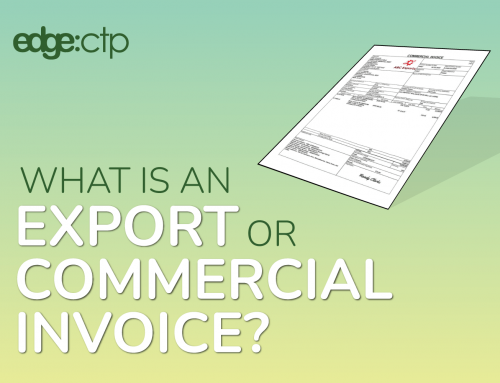How to Launch a Product Overseas:
There are FOUR simple, yet important, steps to launching your product(s) into the overseas market place.
Listen to what steps to take to get your product overseas.
Ask An Expert
Discussion with renowned global trade expert Murdo Beaton and Abdul Mann, creator of the cloud-based export solution EdgeCTP.
Geoff:
Hello gentlemen, today we want to discuss: what are the best steps to take for getting your product(s) into the overseas markets?
Murdo:
On the assumption that you’ve done your Market Research and identified that there IS a potential market for your product overseas, then the next stage is to:
- Step 1: identify product market compatibility: of your product or service with the requirements of that particular overseas market. If your product or service requires modification, then consider the modification BEFORE any product launch in the target market
- Step 2: Consider the product distribution channels: Your market research (done earlier) should have listed a range of potential market entry or distribution channels that best fit your business model. This could either be dealing:
- Directly with the end users (i.e. business-to-consumer, b2c) or
- Via agent or distributor (i.e. business-to-business, b2b)
Basically, your primary first two steps are to identifying the most efficient way of getting your product(s) into the target market place AND into the handles of the people who will give you money for the product(s).
Remember the aim of growing into the international market place is to ‘make money’. Sure you want to build your brand and get market awareness, however, if at the end of the day it doesn’t lead to increased revenues, then as a business leader, you need to ask yourself: “what was all this hard work for”. Therefore, it is vital that your first two steps are in finding the fastest route to the people who want, needs and will pay you for your product.
Abdul:
Ok, say you know your product is suitable for the target market, and you’ve figured out the best or fastest route to going to the market, and the folks who will pay you for your product are firmly in your sights, can we explore how you practically get your product to the target market and into those people’s hands?
Murdo:
Sure, if you’ve sorted out your product is fit for purpose in the market place and identified the most efficient channel(s) for market entry, then:
- Step 3: Sort out the supply chain: so that if market entry is:
- Via a Distributor, then I need to look at identifying a distributor and setting up a distribution agreement
- Via an Agent, then I need to look for an agent and set up an agency agreement
- A Direct to consumer approach, then I’m sending them information, free samples and beginning the engagement process, so I can confirm the likely demand and affirm suitability of my product
Basically, in step 3 you learn what it will take to physically and practically get your product into the hands of the people who will pay you. The idea is to: learn; define and test your product supply chain end-to-end, so you’re confident that at relatively small, initial order levels you understand market entry before you scale up, probably over time.
Put another, in step 3 you begin to fulfil initial order and (if allowed) in a small way, begin the distribution process of getting your products from your local market to the overseas market, and in doing so, learn about the process that will need to be undertaken to complete the order (i.e. get the product(s) to the customer AND get paid for it). There is NO better way to do this than physically doing this exercise, even if that means sending FREE samples of your product to likely customers. You’ll learn a lot from these early end-to-end runs.
Take that learning and adjust the supply chain process, product(s), channel(s), approach etc., to suit. You probably won’t get this right the first time, therefore give yourself a few weeks, months or even a year to perfect this step. Don’t rush it.
Abdul:
Murdo, so what you’re saying is to kind of dip your toe in the water and start small. That is, do small scale thing first, then scale it upwards as time progresses and your experience progresses?
Murdo:
Yes, I would imagine that one would like to harbour the idea that I can always just dip my toe in the water. Now, that is on the basis that your target market will allow you just to dip your toe in the water. They might want you to put your foot up to the knee in the water in the first instance because their demands are something that they want to be met. Trying to meet their demands with your wee (little) toe might not be adequate for them. So, it depends again on what the market dictates. However, whatever the market dictates, it is up to the business leader to determine that “that’s a stage too far”, or “yes I’m comfortable with going that far.”
- Step 4: Scale Up into the Market: Once you have the supply chain processes sorted, and you know what it will take to PRACTICALLY enter into the market, then you can focus on scaling up in that market place. Quantities and price are usually the main two levers that you play with when determining market scale/demand. However, in this step your marketing (gaining product awareness) is going to play a critical role in growth and success, either via:
- in-market salespeople seeing clients face-to-face or trade shows
- telesales outbound and inbound campaigns
- online digital and social media campaigns etc.
What I’m saying is start with quality market research and use that as a basis for getting your product fit for the market place; agree the channel(s) of market entry; learn + test how practically to get your product(s) into the market and then simply scale up.
Abdul:
I guess as part of Step 4: you could also do a large “product launch” campaign (using a range of traditional print and online media, e.g. press releases), all leading to a Hollywood style premier launch event, with A-list guest speakers, drawing in attention from the business and political communities. It takes planning, however, after dipping your toe in the water and finding it’s comfortable, why not dive right in and create a real splash in the market place!
Murdo:
Yes (laugh). Instead of spreading your marketing budget thin across a range of marketing approaches, you could concentrate it into a single large media splash that really resounds across the market place. I like that idea. It will take planning and a dedicate in-market resource for a 6-9 month campaign build-up, however, I could see it working as a real product launch (as long as you have the first three steps perfected). Otherwise, your splash could be a belly flop!! (laugh).
Geoff:
I hope you enjoyed this. If you’d like more information on international trade, go to
www.edgectp.com.






